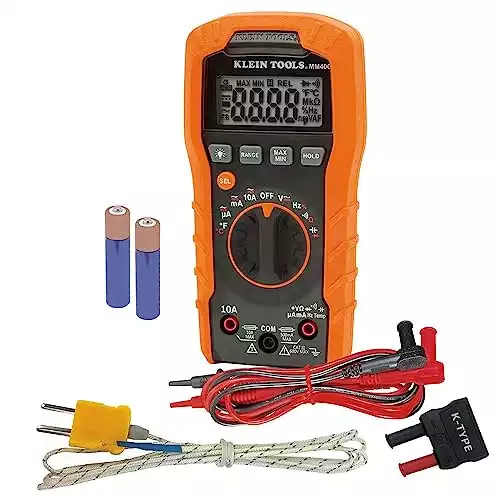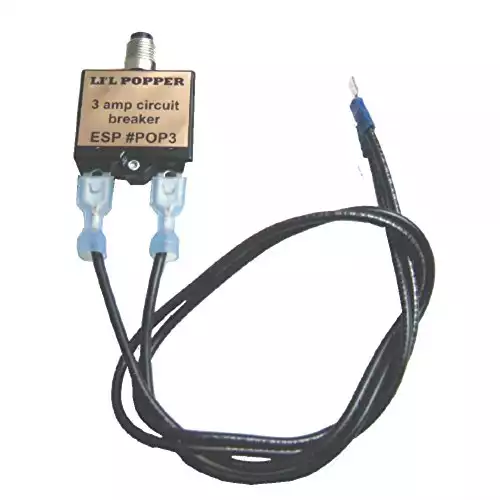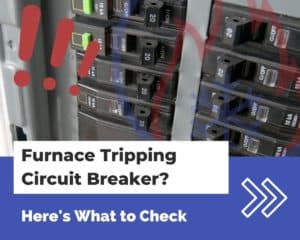HVAC Training Shop is reader-supported. As an Amazon Associate, I earn from qualifying purchases.
Have you found yourself cozied up in blankets, wondering why the furnace decided to take an unplanned break?
You’re not alone.
A blown fuse is often the sneaky culprit behind these chilly interruptions, and while it sounds simple, pinpointing the cause can feel like solving a mystery.
Whether you’re a hands-on homeowner or someone who just wants a basic grasp before ringing up a technician, I’ve got you covered.
In this article, I’ll navigate the maze of furnace components, decode their secrets, and offer you a step-by-step guide to unveil the cause of your blown furnace fuse.
Ready to become a furnace fuse sleuth? Let’s get started!
👉 If your furnace blows its fuse at some point while it’s already powered on or running, check out my list of causes of a blown furnace fuse.
👉 If you’re uncertain whether your furnace fuse has blown, refer to my section on how to tell if a furnace fuse is blown.
How to Find What’s Causing a Blown Furnace Fuse (Step-by-Step Process)
If your furnace blows its fuse right when you turn its power on, then it’s quite frustrating – especially since you have no clue as to what’s causing the fuse to blow.
It could be anything!
In my detailed process outlined below, we’ll methodically isolate various furnace components to pinpoint the reason behind the blown fuse.
Follow the method below if your furnace is blowing its fuse right when you turn its power on.
In order to follow these steps, you’ll need a multimeter to test the resistance of the wiring inside your furnace.
We’re going to use the multimeter to figure out which component or wire is shorted out or broken.
If you don’t have a multimeter, I recommend using this multimeter. It’s a solid, reliable, budget multimeter from a reputable brand.
This Klein Tools multimeter has a rugged rubber grip for maximum durability- no need to worry about it breaking.
Now that we’ve got that out of the way, let’s get started with the troubleshooting process!
1. Turn Off the Power to the Furnace
Before delving inside your furnace, ensure its power is completely turned off.
Flip the power switch to the ‘off’ position, then use your multimeter to confirm the absence of power within the furnace.
2. Inspect the Control Board
One thing that most people don’t consider is that the control board itself could be bad.
The control board is a complex assembly with numerous components. If even one of them malfunctions, it might lead to the furnace’s fuse blowing.
Begin with a preliminary inspection of the furnace’s control board:
- Are there any signs of melted components?
- Are there any blackened areas?
If such indications are present, it’s likely that the control board itself is the culprit behind the blown fuse.
3. Remove the Thermostat
Next, we’ll investigate the thermostat.
Carefully detach the thermostat from the wall, revealing its back:
- Are there any compromised wires?
- Notice any dark spots or evidence of electrical arcing or small fires?
If you spot any of these, you have already pinpointed the problem – the thermostat.
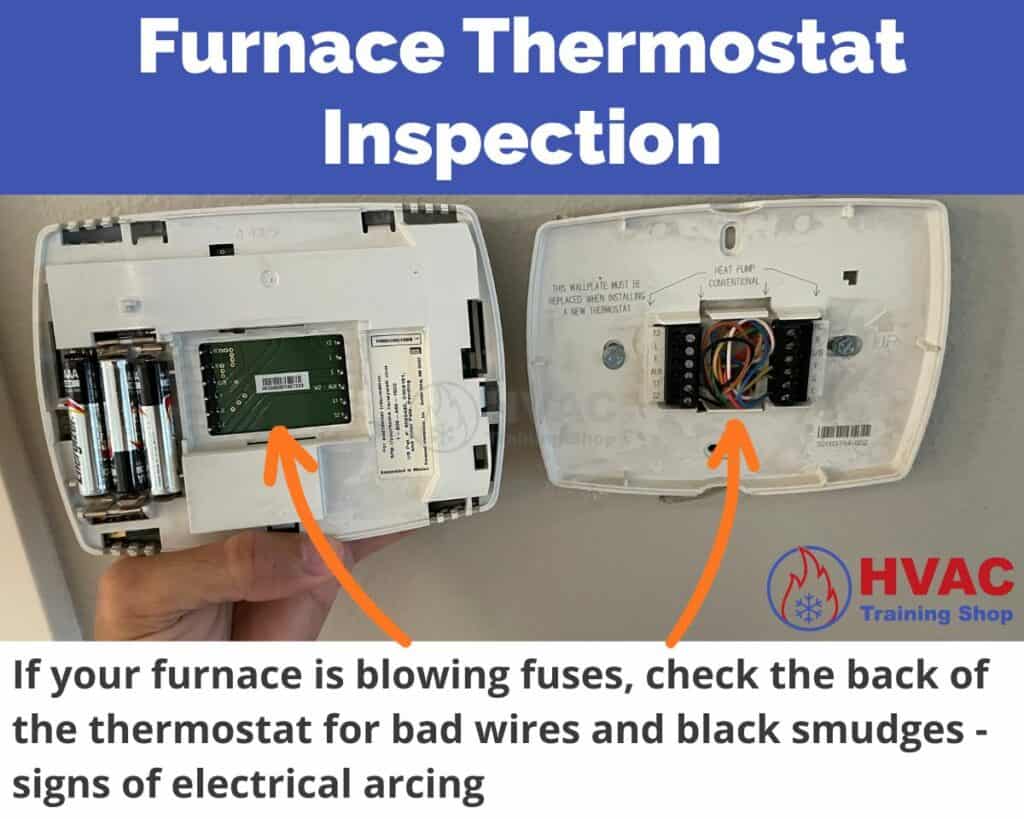
Next, disconnect the wires from the thermostat:
- If the thermostat wires are attached to a separate backplate, they can be left alone.
- If the thermostat wires are connected directly to the thermostat, you need to disconnect the wires from the thermostat with caution.
It’s essential to not let these wires touch one another, as that may cause a short circuit.
To avoid a short circuit, you may consider wrapping each wire individually with electrical tape. This protective measure ensures the wires remain isolated and don’t accidentally come into contact with each other or other surfaces, which could lead to a short.
4. Disconnect the Thermostat Wires From the Control Board
If the thermostat seems fine, the next thing to check is the furnace’s control board.
Examine the thermostat wires connected to the control board.
Check for any wires that might be damaged.
Inspect the routes these wires traverse for any sharp metallic edges that the wires may have scraped against, which could have led to the exposure of the wire’s inner metallic core.
Before disconnecting any wires, snap a photo as a reference for reconnection.
Proceed to disconnect all thermostat wires from the control board, leaving only the ‘C’ wire connected.
The ‘C’ wire links the common terminal to the ground, and its connection is essential for further troubleshooting.
5. Probe the Wires at the Control Board
The next step is to use your multimeter to test the thermostat wires at the control board.
Use your multimeter to test the thermostat wires on the control board for any short circuits:
- Set your multimeter to continuity or resistance mode.
- Connect one multimeter probe to the ‘C’ terminal
- Use the other multimeter probe to test the rest of the wires sequentially. A wire with low resistance or a continuity beep indicates a short circuit.
An exception is the ‘Y’ wire. If you have an AC unit installed, this wire connects to the AC unit’s contactor coil.
The contactor coil will naturally have resistance – typically measured in tens of ohms.
But if any other wires show low resistance or continuity, inspect them for damages and their connection points at the thermostat. Take a look at the wire and see if it is nicked and shorting out on a metallic surface.
Additionally, gently pull out some wire length from the wall to spot any hidden damage.
6. Reinstall the Thermostat and Probe the Wiring Again
If the initial multimeter tests from the control board all pass, remount the thermostat.
The next step is to verify if any internal components of the thermostat might be blowing the fuse.
Repeat the resistance tests on the thermostat wires at the control board:
- Reinstall the thermostat by reconnecting it to its wall plate, or reconnecting the wires to it.
- Connect one multimeter probe on the ‘C’ terminal at the control board.
- Use the other multimeter probe to test the rest of the wires sequentially. A wire with low resistance or a continuity beep indicates a short circuit.
If you don’t find any short circuits in the thermostat wires, the thermostat and its wires are not the problem. Reconnect the thermostat wires to the control board.
7. Check the Furnace’s Safety Devices for Short Circuits
Having eliminated the thermostat and its wires as potential culprits, shift your focus to the furnace’s safety devices.
You’re looking at two aspects: The safety devices themselves, and their connecting wires.
Here are some typical safety devices in a furnace:
- High Limit Switch
- Flame Rollout Switch
- Draft Safeguard Switch
The safety device wires typically connect to the control board through a plastic connector. Detach this connector.
Use your furnace’s wiring schematic as a guide to identify the corresponding device for each connector pin. For example, the ground pin is usually connected by a green or green/yellow wire.
Next, measure the resistance between each safety device wire and the ground.
If you find that any of the devices are short-circuited, then that device or its wiring is bad.
If none of the safety devices are short-circuited, reconnect the plastic connector to the control board.
8. Check the Furnace’s Transformer
Last but not least, we’re going to check the furnace’s transformer.
The transformer plays a vital role in converting the line voltage from your home’s power supply into the low voltage that feeds through the fuse and energizes the control board.
While being careful to not touch any wires, check the voltage coming out of the transformer’s secondary winding:
- Turn your multimeter on to its AC voltage setting
- Locate the wires that connect the transformer to the control board and disconnect them. Make a mental note or take a picture to remember where each wire goes.
- Connect your multimeter to the two wires from the transformer that you disconnected from the control board
- Carefully turn on the power to your furnace, making sure not to touch any live wires during the process.
- Use your multimeter to measure the voltage between the two wires that you disconnected from the control board.
A good transformer will output anywhere from 22-28 volts. If it is outside of this range (especially under), then your furnace’s transformer is bad.
Causes of a Blown Furnace Fuse
When faced with a furnace fuse that keeps blowing upon powering on, I recommend following my detailed step-by-step guide above.
However, if your furnace’s fuse blows some time after it’s been turned on, the list provided below outlines the furnace components that might be causing the issue.
It can be understandably frustrating to constantly replace fuses during troubleshooting.
To save time, effort, and fuses during this process, consider utilizing a “resettable fuse” or a circuit breaker.
Unlike traditional fuses that burn out when overloaded, a resettable fuse will trip, preventing damage. This means you can reset and reuse it multiple times without needing to replace it after each incident.
Here are all the different things that could cause a furnace fuse to blow:
Faulty or “Nicked” Wiring
Picture this — the protective sheath surrounding your furnace’s wiring erodes, revealing its metallic innards. This exposed metal accidentally makes contact with the furnace’s metal components, leading to an instantaneous short circuit.
The result? A blown fuse! A good place to check for nicked wiring is sharp-edged holes where wiring passes through. These sharp holes can easily tear the protective layer of wires.
Improper Fuse Size
If your furnace has a fuse that’s rated for less amps than your control board requires, then your furnace fuse will blow.
It’s a simple mismatch. Insert a 2-amp fuse where a 3-amp fuse should be, and you’re asking for trouble.
Most furnaces require a 3-amp or 5-amp fuse. To check what type of fuse your furnace requires, you should look at the fuse slot on the control board or the wiring diagram on the furnace.
Some furnace control boards have the fuse amp rating printed next to the fuse slot. For example, “FUSE 3-AMP” may be printed next to the fuse slot on your furnace’s control board to denote that a 3 amp fuse is required.
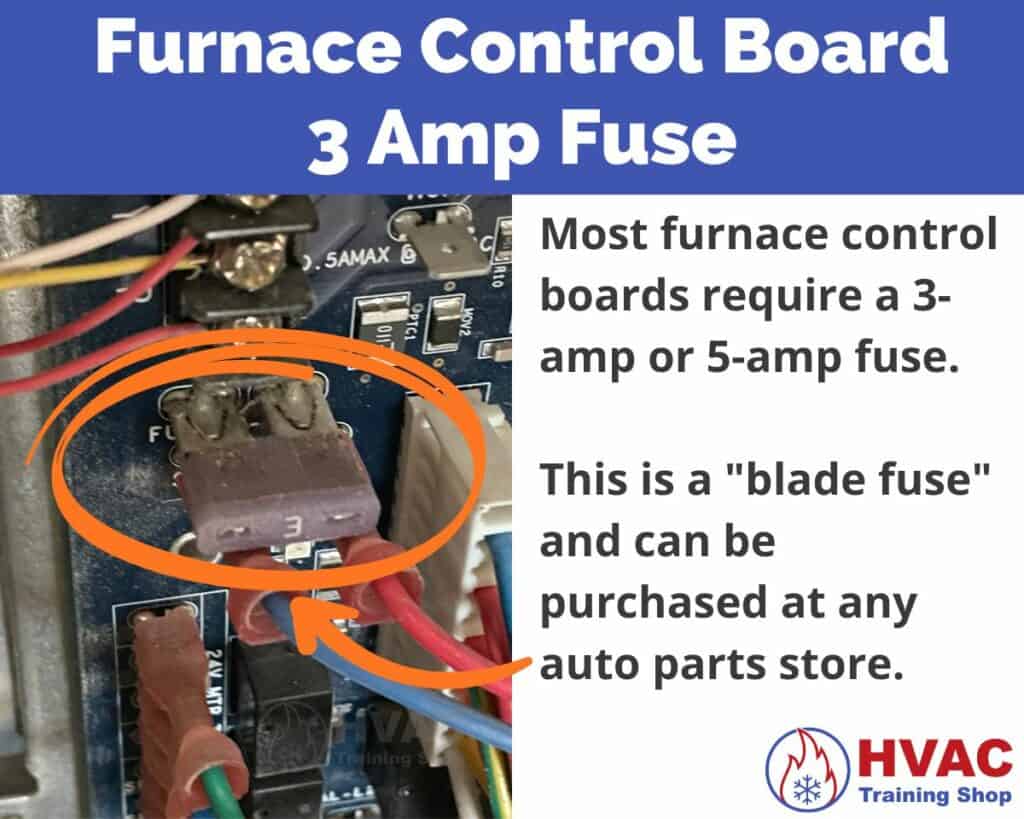
If the fuse amp rating isn’t printed on the control board, then you should look at the wiring diagram printed on your furnace’s cover panel. The wiring diagram should have the furnace’s fuse amp rating on it.
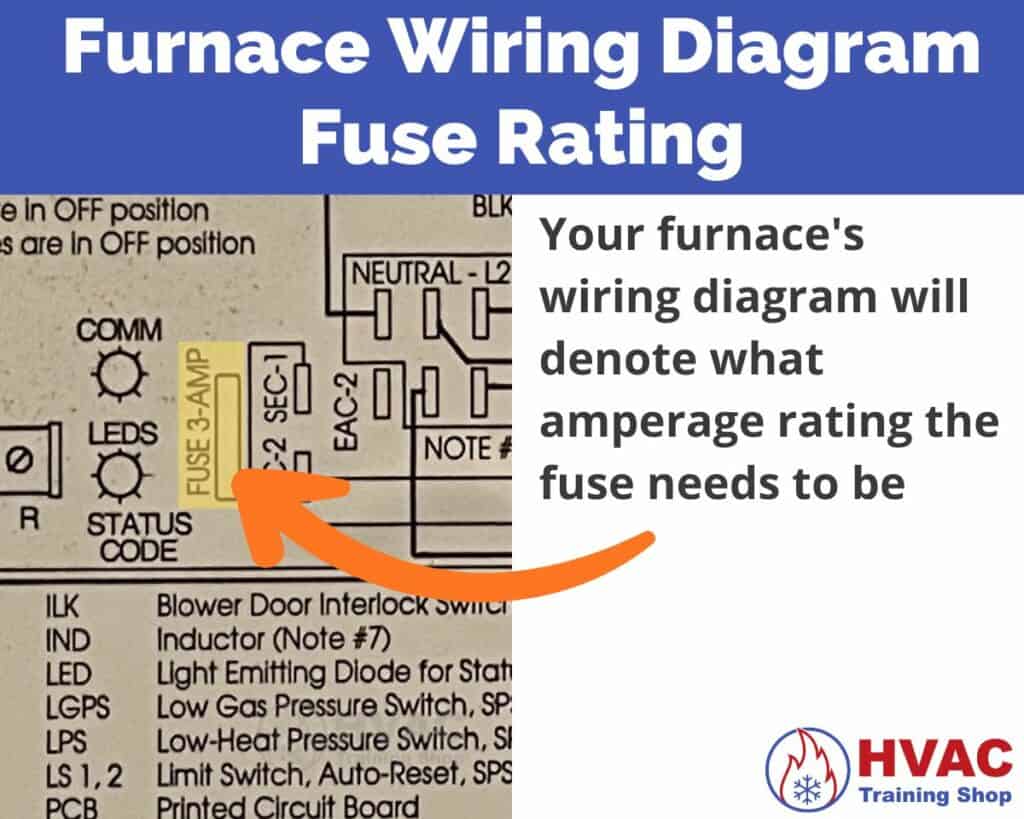
Bad Gas Valve
Did you know that the gas valve draws power from your furnace’s circuit board?
The solenoid that opens and closes your furnace’s gas valve is powered by low voltage from your furnace’s circuit board. So if the solenoid on the gas valve malfunctions your furnace’s control board fuse will blow.
So how do you check if your furnace’s gas valve is blowing your furnace’s control board fuse?
One way to check is to use your multimeter to test the resistance on the gas valve’s solenoid.
Some gas valves have a wiring harness that plugs into them, so it’s easy to disconnect the plug that goes into the gas valve.
However, some gas valves have two (or more wires if it’s a multi-stage furnace). In that case, you’ll need to disconnect the wires individually.
Take note of where the wires are supposed to connect so you can reconnect them when you’re done.
After disconnecting the gas valve, measure the resistance between the terminals. If your gas valve is multi-stage, then you need to measure the resistance between the common and low terminals, and also the common and high terminals.
If you measure a short circuit between any of those terminals, then the gas valve is blowing your furnace’s fuse.
Bad Contactor
If you have air conditioning installed, a shorted coil in the AC contactor will blow your furnace’s fuse.
A bad contactor coil will cause your furnace’s fuse to blow when power is sent to the contactor.
The easiest way to tell if you have a bad contactor is to check if your furnace’s fuse blows when your furnace’s thermostat goes into cooling mode.
If your furnace’s fuse blows when your thermostat’s cooling mode is engaged, then your AC contactor is most likely bad.
Another way to check if you have a contactor with a bad coil is to use a multimeter to measure the resistance across the contactor’s coil. If the contactor coil is shorted, then it is bad.
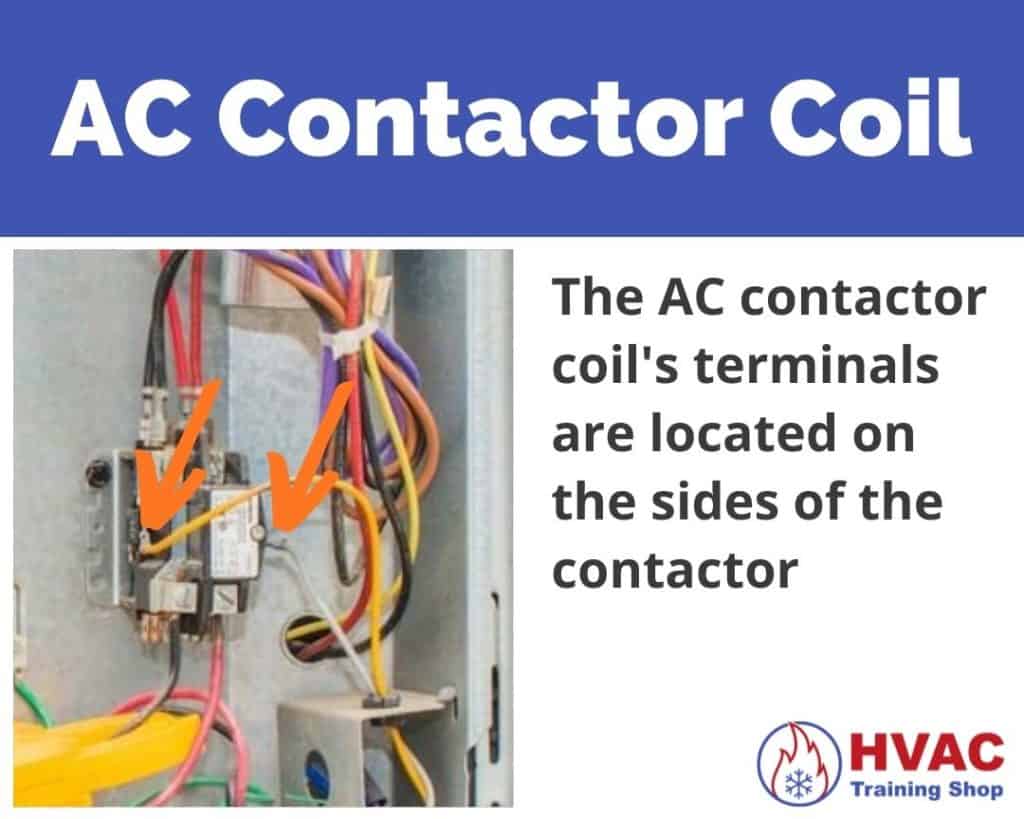
Bad Transformer
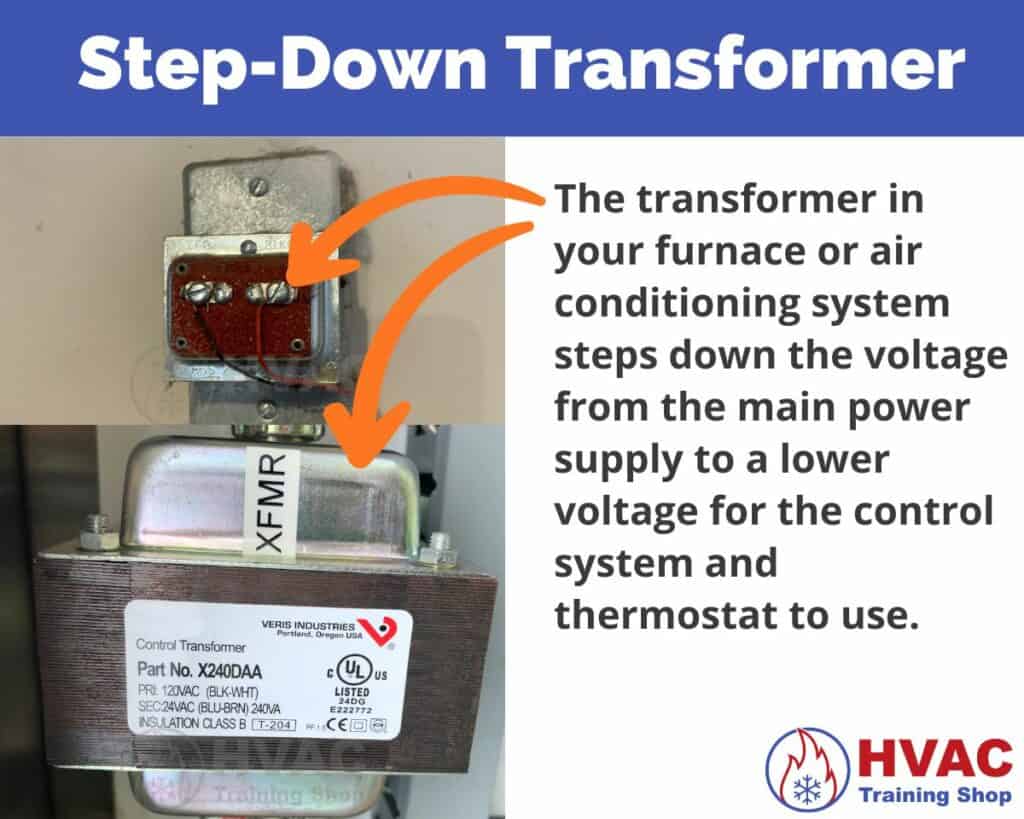
The transformer plays an important role in your furnace – it converts your home’s line voltage to the low voltage needed by the furnace’s control board.
Your furnace’s fuse is actually connected directly to the low-voltage side of the transformer. So if your transformer goes bad, your furnace’s fuse will blow.
Some transformers are built-in on the furnace control board, so if the transformer goes bad, you’ll need to replace the entire control board.
To test if your transformer is bad, use your multimeter to check if the secondary (low voltage) side of the transformer is outputting 24 VAC while the power to the furnace is on.
Most transformers will output somewhere between 22 to 28 VAC in the USA – that is okay.
But if your transformer is outputting more or less than 22 to 28 VAC (especially less), then your transformer is bad.
Bad Thermostat
Not many people take into account that the thermostat itself could be the problem!
A bad thermostat can be a silent fuse blower since it’s powered by the low-voltage 24 VAC from the furnace’s control board.
So if the thermostat goes bad, the furnace’s fuse will blow.
The easiest way to figure out if you have a bad thermostat that’s blowing your furnace’s fuse is to follow my step-by-step instructions above to diagnose what’s causing your furnace fuse to blow.
Bad Safety Device
I go through the method to test if your thermostat (among many other devices) is the culprit of your blowing furnace fuse.
A furnace has many safety devices, and when one goes bad, it can result in a blown fuse.
For example, if one of your furnace’s safety devices shorts out to ground or its wiring gets scuffed up and shorts to the furnace case, your furnace’s fuse will blow.
Here are some furnace safety devices that can cause your furnace fuse to blow:
- High Limit Switch
- Flame Rollout Switch
- Draft Safeguard Switch
The best way to check if you have a bad safety device in your furnace is to disconnect the safety devices from your furnace’s control board and test the resistance between the device and ground. If the device is shorted to ground, then the device or its wiring is bad.
I go through the steps for testing your furnace’s safety devices in my step-by-step instructions above.
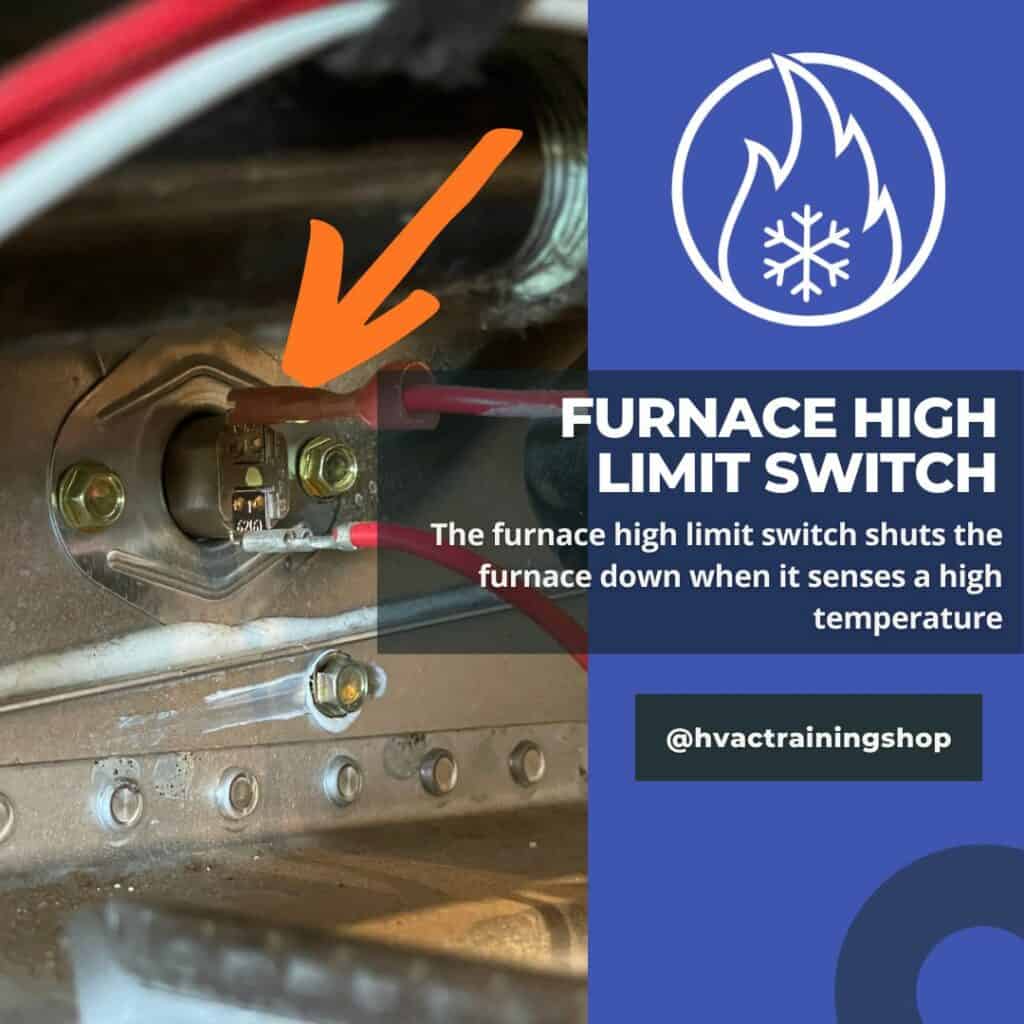

Bad Control Board
If everything else is good, it could be the control board itself that’s causing your fuse to blow.
Sometimes, a component on the control board like a relay can compromise its integrity, leading to a blown fuse.
To test if your furnace’s control board is bad, disconnect all low-voltage devices and power on the furnace. If the fuse blows, the control board might be bad.
If the fuse does not blow, then one of the other devices or wiring is bad.
How to Tell if a Furnace Fuse Is Blown
Blade fuses are used on most furnace control boards. They are also commonly found in vehicles, so they are a familiar fuse type for most people.
Encased in plastic, a blade fuse has two metal prongs designed to plug directly into your control board.
To determine if a blade fuse has blown, examine its central plastic casing for signs of the melting element:
- A black smudge in the center indicates a blown fuse.
- A disconnected element in the middle also signifies a blown fuse.
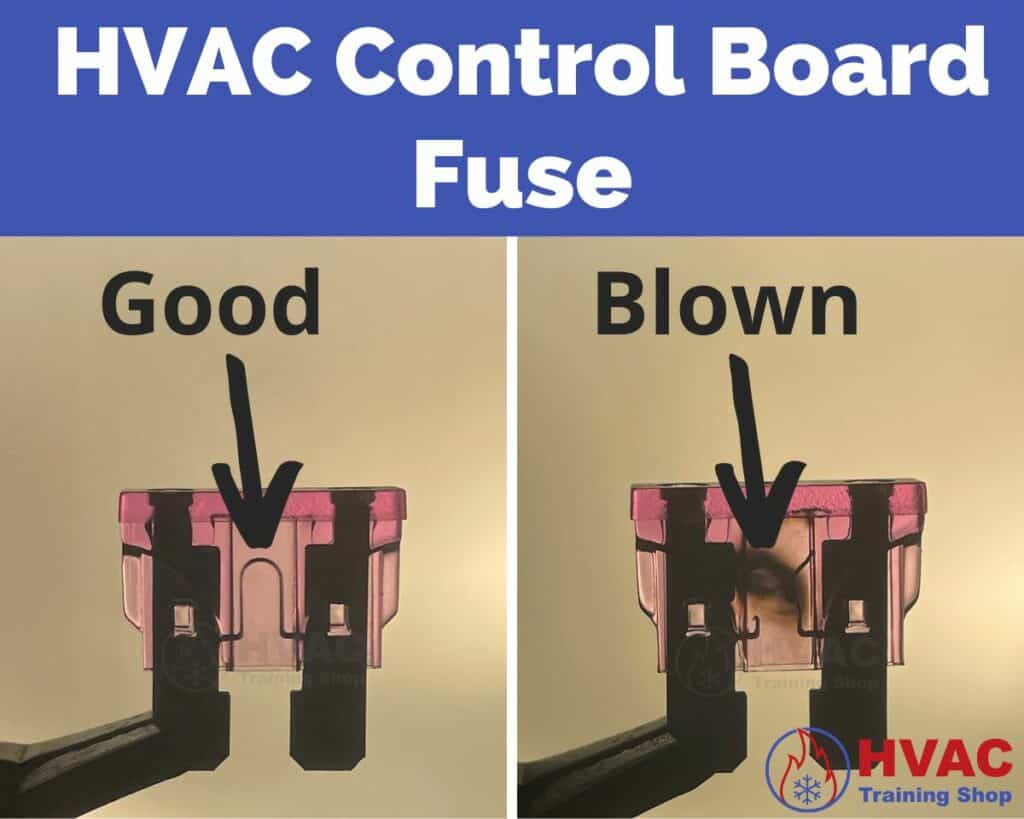
Glass cartridge fuses are used in some furnace control boards, but they aren’t as common as blade fuses.
Glass cartridge fuses have a melting element that goes through a glass tube. The melting element is visible within the glass tube, so you can see whether the fuse is good or blown.


